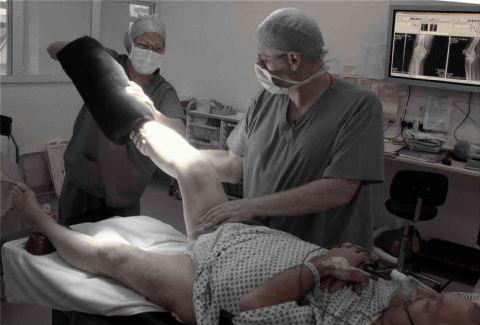Anatomical sites 1
In spinal anaesthesia, all dermatomes below the upper limit of block are usually anaesthetized. Insertion of spinal needles is restricted to below the space between the first and second lumbar vertebrae (L1/2) Because of this, the reliable upper extent of spinal anaesthesia does not usually rise above the mid-thoracic dermatomes. Therefore, the technique can be used for surgery on structures below that level:
- Lower limbs: Spinal is commonly used for hip and knee replacements and can be used for other procedures such as knee arthroscopy and foot surgery
- Perineum: Surgery such as haemorrhoidectomy or procedures to the external genitalia of both sexes) can be carried out under spinal
- Pelvis and pelvic organs: A spinal can provide anaesthesia for operations to the bony pelvis (e.g. the acetabular component of hip replacement surgery) and to the pelvic organs, especially endoscopic surgery to the bladder, prostate and uterus
- Lower abdomen: Surgery such as inguinal hernia repair is possible under spinal

Fig 1 Exanguinating the leg prior to knee replacement surgery under spinal anaesthesia